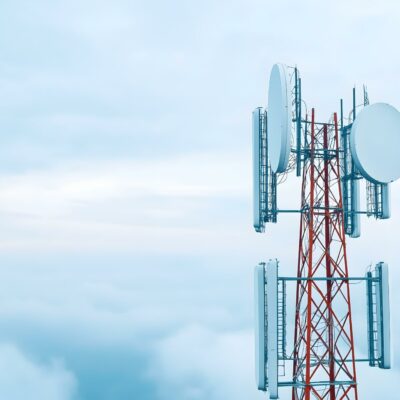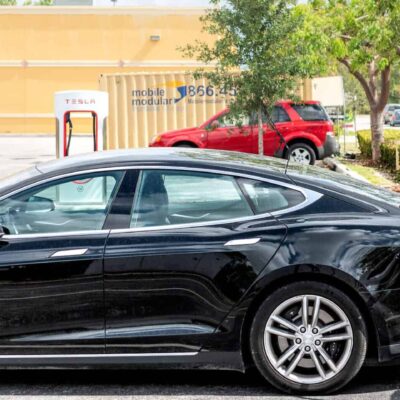As the push for green transportation ramps up following President Biden’s latest infrastructure bill, industry players are wondering what the market landscape will look like as upstart manufacturers begin to enter the field. Many early EV market entrants have established proprietary systems in charging, manufacturing, and design, but what will guide those arriving later to the game as the industry continues to evolve?
For the final chapter of our WIT On Point EV series, WIT brought together a panel of experts with knowledge of all things automotive to evaluate the standards surrounding each element of electric vehicle architecture. These professionals have decades of experience working in vehicle design and manufacturing and are active in the electric vehicles industry.
The Experts
WIT’s VP of Operations, Mike Connelly, was joined by Laine Mears, who has over 25 years of experience in automotive manufacturing; Andrea Strzelec, a leading expert in engine systems; and Marcus Gilmore, who has spent over a decade working on sustainable energy systems and has recently focused on green transportation.
Chapter 1 covered the topic of meeting electrification goals- namely, the U.S. goal to have half of all new cars be zero-emission by the start of the next decade. Core to the discussion were viewpoints on what it would take for the U.S. to meet its target.
Chapter 2 then evaluated developments in EV infrastructure and what the switch to fully electric fleets looks like. The topics touched on surrounded battery charging methods, zero-emission vehicles, and the trajectory of hybrids.
For this edition, the conversation among our panelists explored the need for standards in the automotive space as the industry continues shifting towards a more electrified future. Concepts covered include design standards, charging infrastructure, incumbents’ proprietary systems, and auto patents. Read on to learn what the panel feels is next in EV implementation.
The Need for Standards
In any industry, it is important to have a defined list of standards that guide the creation of innovations in the space. And when it comes to electric vehicle standards, these guidelines are essential in ensuring interoperability between different manufacturers’ devices. In the past, we have seen how this can take shape with elements like gasoline; at some point, everyone agreed to use the same filler with the same diameter and the same speed of process.
Now, EV charging protocols are seeing a similar standardization as The Combined Charging System (CCS) has become the basis for direct current (DC) chargers. Expert Marcus Gilmore predicts that this will continue as the competing CHAdeMO standard moves to the wayside in terms of North American charging infrastructure. Gilmore also explained that there is hope in the communications and data-sharing space that the Open Charge Point Protocol has become the standard adopted by OEMs and charging equipment manufacturers alike. But overall, we have yet to see a set of standards that have had formal industry-wide implementation.
The need for these standards is growing fast as upstart manufacturers enter the EV market alongside industry incumbents. Expert Andrea Strzelec explained that from an economic perspective, standards will drive down costs and create economies of scale. And while they may benefit those entering the EV market later, Strzelec feels that the players who have sunk a lot of money into their proprietary systems may not welcome the introduction of new standards. This then sets up a situation where two things could happen:
- Those manufacturers with proprietary systems have their specific guidelines become the industry standard, creating a monopoly
- Industry-wide standards are put in place, and those with propriety systems will resist joining the common standard
These outcomes, on both fronts, are undesirable for the market as they could impede consumers’ widespread adoption of EVs. If all manufacturers aren’t working based on the same set of standards, it could create issues with cost, the supply chain, and the usability of the charging infrastructure. And if they are, then we must pose a new question: how much will standards affect the industry’s patent structure?
Patents and Proprietary Systems
When you think about proprietary systems, it’s important to consider how patent structure may affect the EV market’s progression. Moderator Michael Connelly noted that cellular standards made it incredibly hard for new players to enter the industry without having to pay a cost because when it comes to patents, you don’t just have the cost of an item; you have the cost of the item plus the license to use that item. And in the auto world, new entrants will never be able to understand what patents cover their vehicle until someone tells them so. So, we wonder: will the auto industry treat standards like the cellular industry did and require people to disclose their patents?
Expert Laine Mears believes since the government drives a lot of standards, that the pressure of patents being tied to those standards will be alleviated. But on the other hand, many manufacturers are entering an arena that they haven’t traditionally played in, and they might not be aware of what technology is covering some of their innovations. Strzelec said it simply: the integration of technology creates a minefield for infringement that companies need to be aware of.
The Standardization of Charging Infrastructure
Will standards in manufacturing prompt standards in charging infrastructure? Gilmore thinks so. And the situation in New York with Tesla has shown just how much this could benefit the EV market. In 2019, New York state began a multi-million-dollar incentive program set to build over a thousand new fast-charging stations in public locations. As we know from our previous panel chapters, doing so can help mitigate range anxiety in consumers who still have some hang-ups about switching to electric. With all of this in mind, Tesla wanted to deploy their chargers for the program, which was an idea that was quickly refuted by commissioners. Why? Tesla’s chargers are not accessible to all vehicles, ultimately making them ineligible for the government funds needed to deploy the stations.
In these instances, Gilmore believes that government policy could help with both facilitating standardization and limiting EV market fragmentation caused by proprietary technology. With large infusions of funds being deployed around the country having similar provisions implemented by the state of New York, there will inevitably be a harder push for universal standards. This way, future funded infrastructure will be accessible to as large of a population as possible, regardless of model, make, or OEM.
If your company needs help preparing for these challenges, reach out to WIT for the best experts who can advise you on your strategy. Our electric vehicles expert team was created to address what we expect to be the key areas of litigation in the move to electric fleets, and their knowledge covers all aspects of manufacturing.




